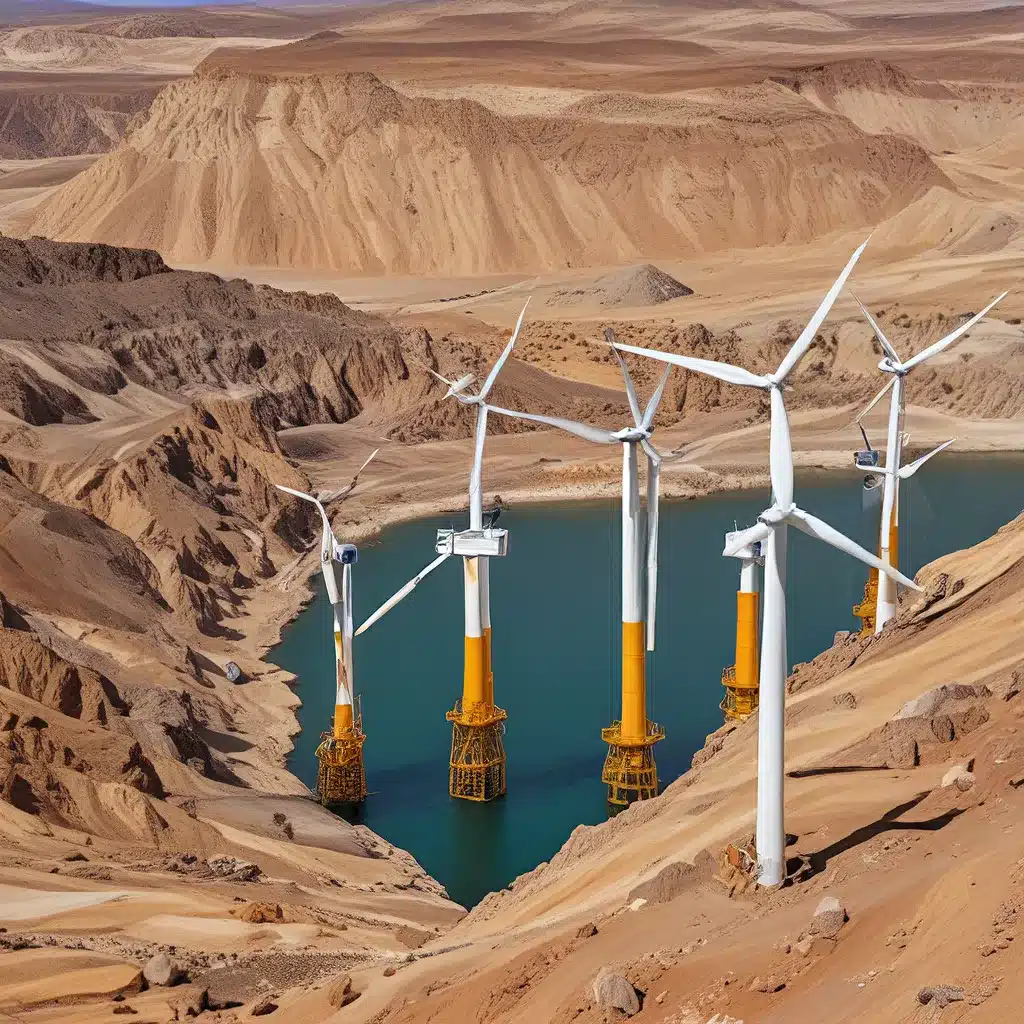
Unearthing the Challenges: Minerals Powering the Clean Energy Transition
As we embark on the renewable energy revolution, an often overlooked yet critical challenge emerges – the responsible sourcing of the minerals that make this transition possible. You see, building the infrastructure for clean energy, from electric vehicles to solar arrays and wind turbines, requires an abundance of certain key minerals. And the skyrocketing demand for these resources is driving a massive expansion of mining operations worldwide, with potentially dire consequences for the environment and local communities.
It’s a complex issue, fraught with competing interests and challenging trade-offs. On one hand, we desperately need to transition away from fossil fuels to avert a climate catastrophe. But on the other, the very materials required to build this sustainable future can themselves lead to environmental degradation and social injustice if not sourced responsibly.
As I delve into this topic, I’m struck by the sheer scale of the challenge. According to research commissioned by Earthworks, in a 100% renewable energy future, the demand for minerals like lithium, cobalt, and nickel could reach 136%, 280%, and 426% of current economic reserves, respectively. That’s a staggering prospect, and it highlights the urgent need to rethink how we extract and consume these critical resources.
Extracting Responsibly: Mitigating the Impacts of Mining
The harsh reality is that mining is an inherently destructive industry, long associated with human rights abuses, environmental devastation, and community displacement. From the depletion of freshwater resources to the contamination of marine ecosystems, the footprint of mining operations can be truly devastating.
Take the case of lithium extraction in South America’s “lithium triangle” – the salt flats of Chile, Bolivia, and Argentina. This region is home to the vast majority of the world’s lithium deposits, and the rush to extract this critical mineral has led to a wave of socio-environmental disputes, with local communities bearing the brunt of the impacts.
Similarly, the nickel mining industry has been plagued by a litany of issues, including devastating impacts on ecosystems in places like Canada, Russia, Australia, Philippines, Indonesia, and Papua New Guinea. And in the Democratic Republic of Congo, the heart of global cobalt production, the industry has been marred by pollution, tax evasion, and the exploitation of artisanal miners, including the use of child labor.
It’s a sobering reality, and one that demands urgent action. As the clean energy transition accelerates, we simply cannot afford to ignore the human and environmental costs of the minerals that power it.
A Sustainable Future: Balancing Demand and Responsibility
The good news is that there are solutions to this challenge – it’s just a matter of having the will to implement them. The key lies in developing a shared commitment to responsible mineral sourcing, recycling, and reuse, coupled with a reduction in overall energy and mineral demand.
On the sourcing side, companies and governments must work together to implement rigorous due diligence and supply chain monitoring to ensure that mining operations adhere to the highest environmental and social standards. This includes conducting comprehensive environmental and social impact assessments, developing robust mitigation measures, and ensuring that local communities have a voice in the decision-making process.
At the same time, we need to rethink our approach to mining itself. By exploring alternative extraction methods, prioritizing the recovery of minerals from waste streams, and investing in innovative recycling technologies, we can drastically reduce the need for new mining activity.
And perhaps most crucially, we must curb our insatiable demand for these critical minerals. This means embracing more sustainable consumption patterns, prioritizing energy efficiency, and exploring alternative battery chemistries that rely less on materials like cobalt and lithium.
It’s a multifaceted challenge, to be sure, but one that we must confront head-on. The stakes couldn’t be higher, as the very future of our clean energy transition hangs in the balance.
Collaboration and Coordination: A Global Effort
No single country, company, or individual can tackle this issue alone. It’s going to take a coordinated, global effort to ensure that the minerals powering our renewable energy future are extracted and consumed responsibly and sustainably.
Fortunately, there are promising signs of progress. International initiatives like the Extractive Industries Transparency Initiative (EITI) and the Organisation for Economic Co-operation and Development (OECD) have been working to establish robust standards for responsible mineral sourcing. And many major mining companies have even set their own emissions reduction targets, recognizing the urgent need to minimize the environmental impact of their operations.
But more needs to be done. Governments must step up and strengthen regulatory frameworks, invest in capacity building, and promote transparency to hold companies accountable. And consumers and investors must continue to demand that the businesses they support are prioritizing sustainability and social responsibility.
It’s a complex and multifaceted challenge, to be sure. But as I’ve delved into this topic, I’ve become increasingly convinced that it’s a challenge we must confront, for the sake of our planet and the generations to come. The path to a sustainable future may be paved with difficult decisions and hard-won compromises, but the alternative is simply too dire to contemplate.
So let’s roll up our sleeves and get to work. The clean energy revolution is underway, and we owe it to ourselves and our children to ensure that it’s built on a foundation of responsibility and justice.

